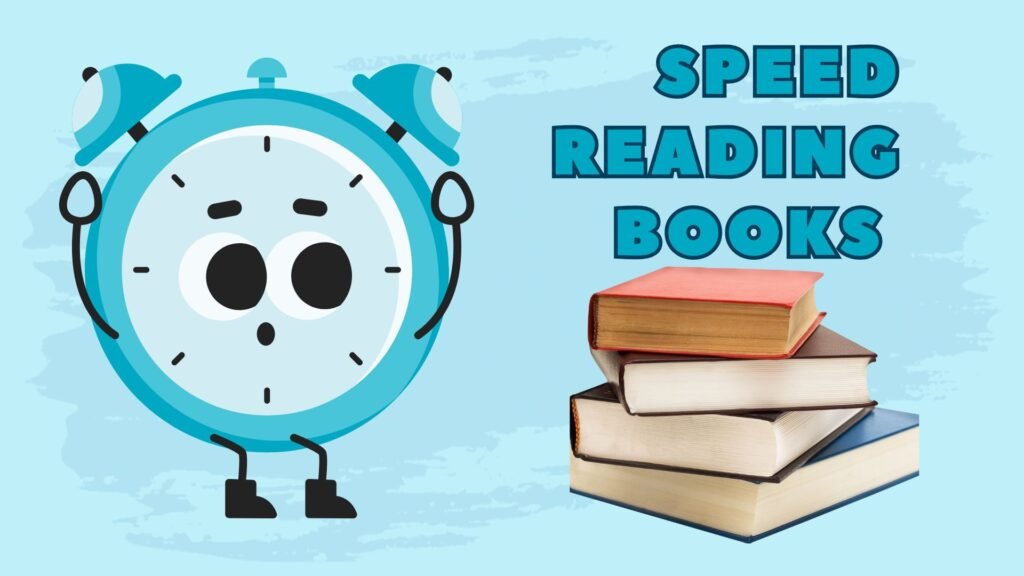Why Speed Reading Matters
The average person reads 200–300 words per minute (WPM) but retains only 30–40% of the content.
Speed readers, however, hit 600–1,000 WPM with 80%+ retention by hacking their brain’s natural processing power.
Whether you’re a student, professional, or lifelong learner, these neurobiology-backed strategies will transform your consumption of books.

Step 1: Optimize Your Environment
Your surroundings dictate your focus. Here’s how to engineer the perfect reading zone:
- Lighting: Use warm, indirect light (2,700–3,000 Kelvin) to reduce eye strain. Avoid overhead fluorescent lights.
- Temperature: Studies show 68–72°F (20–22°C) maximizes cognitive performance.
- Timing: Your brain’s peak focus windows are 6–10 AM and 8–10 PM due to circadian rhythm dips in cortisol.
- Distraction-Free Zone: Use noise-cancelling headphones with brown noise (Rainy Mood) or instrumental music (Focus@Will).
Pro Tip: Place your chair facing a wall—not a window—to minimize visual distractions.
Step 2: Set SMART Reading Goals
The SMART framework turns vague goals into actionable plans:
- Specific: “Read 30 pages of Atomic Habits on productivity hacks.”
- Measurable: Track progress with apps like Readwise or a simple spreadsheet.
- Attainable: Start with 20-minute sessions, then scale to 45–60 minutes.
- Relevant: Align books with current projects (e.g., leadership skills for a promotion).
- Time-Bound: “Finish Sapiens in 7 days by reading 50 pages daily.”
Step 3: Master the Art of Previewing
Previewing primes your brain to absorb key ideas faster. Spend 5–10 minutes:
- Read the Title & Subtitle: What’s the core promise? (e.g., Deep Work = Focus in a distracted world.)
- Scan the Table of Contents: Identify pivotal chapters.
- Read the Introduction & Conclusion: Authors often condense their thesis here.
- Flip Through Headings/Subheadings: Highlight recurring themes.
- Note Visuals: Graphs, tables, and diagrams often summarize critical data.
Step 4: Use the Pointer Technique (Science-Backed)
Your eyes naturally jump backward (regressions) and fixate on single words, slowing you down. The Pointer Technique trains your eyes to move smoothly:
- Tool: Use your finger, pen, or stylus.
- Motion: Glide the pointer under each line at a steady pace.
- Speed: Gradually increase speed by 10% each session.
Why It Works: A 2019 University of California study found pointer users reduced regressions by 62% and doubled reading speed in 3 weeks.
Pro Tip: Pair with apps like Spreeder to practice RSVP (Rapid Serial Visual Presentation).
Step 5: Skim Like a Pro
Skimming isn’t “cheating”—it’s strategic extraction. Focus on:
- Bolded/Italicized Words: Authors use these to signal key concepts.
- First/Last Sentences of Paragraphs: Contain core ideas.
- Signal Phrases: “However,” “In conclusion,” “Most importantly.”
- Numbers/Dates: Often mark critical evidence.
Step 6: Crush Subvocalization (The Silent Speed Killer)
Subvocalization—mentally “hearing” words—caps speed at speaking pace (~150 WPM). Break the habit with:
- Chewing Gum: Occupies your tongue, blocking inner speech.
- Count Silently: Whisper “1, 2, 3” to drown out word-by-word narration.
- Visualize Concepts: Replace sounding out words with mental images (e.g., “apple” → picture an apple).
Study: MIT researchers found visualization boosts retention by 40% compared to subvocalization.
Step 7: Skip Strategically
Not every word matters. Skip:
- Redundant Examples: If you grasp the concept, move on.
- Filler Words: “In order to,” “it is important to note.”
- Jargon Overload: Technical terms often repeat—learn them once, then skim.
Pro Tip: Use the 80/20 Rule: 20% of content delivers 80% of value. Focus there.
Step 8: Train Your Brain with Deliberate Practice
Speed reading is a skill. Use these drills:
- Daily Timed Sprints: Read for 10 minutes, track WPM, and aim for 5% weekly gains.
- Peripheral Vision Exercises: Practice reading 2–3 words at a time using EyeQ.
- Comprehension Tests: Use free tools like Literacy Minnesota to quiz retention.
Advanced Hack: Join a speed reading course like Iris Reading for structured coaching.
The 7-Day Speed Reading Challenge
Day 1–2: Optimize environment + set SMART goals.
Day 3–4: Preview 3 books + practice pointer technique.
Day 5–6: Skim 2 chapters + crush subvocalization.
Day 7: Sprint-read 50 pages + track progress.
Download: Free Speed Reading Tracker
Final Word: Speed Reading Is a Superpower
With practice, you’ll unlock the ability to learn faster, lead smarter, and outpace competitors. Remember: Speed + comprehension = mastery.
Your Next Steps:
- Try One Technique Today: Start with the Pointer Method.
- Share This Guide: Tag someone who needs to read faster.
“The more you read, the more things you will know. The more that you learn, the more places you’ll go.” – Dr. Seuss
🔗 Share this guide to empower others to read smarter, not harder.
📩 Want a free speed reading toolkit? Download here.(Coming Soon)

